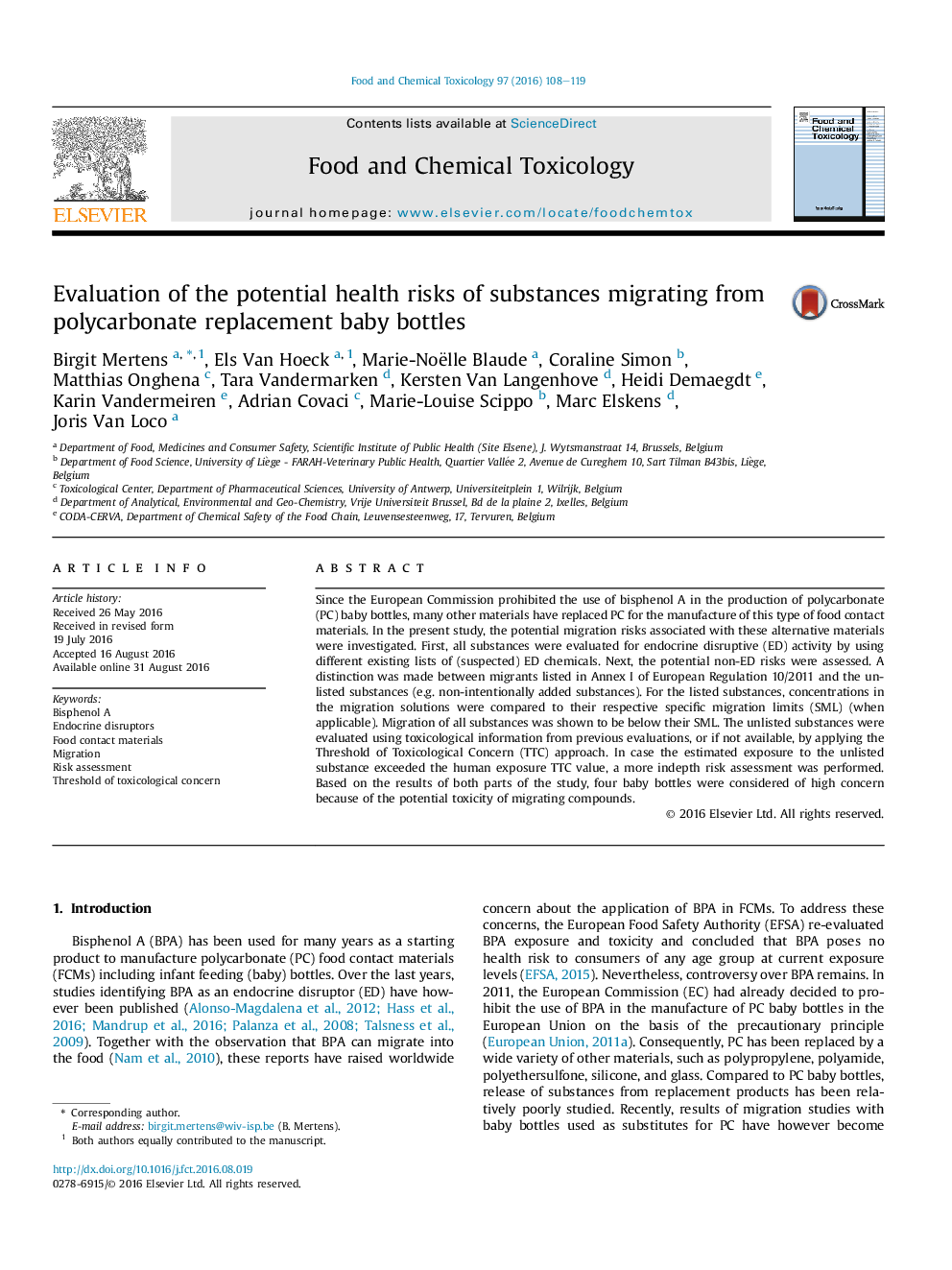| Article ID | Journal | Published Year | Pages | File Type |
|---|---|---|---|---|
| 2584829 | Food and Chemical Toxicology | 2016 | 12 Pages |
•Investigation of potential health risks of migrants from PC replacement baby bottles.•Based on existing lists of EDs, 3 baby bottles were considered of high concern.•Based on the TTC approach, 2 baby bottles were considered of high concern.•After combining this information, 4 baby bottles were considered of high concern.
Since the European Commission prohibited the use of bisphenol A in the production of polycarbonate (PC) baby bottles, many other materials have replaced PC for the manufacture of this type of food contact materials. In the present study, the potential migration risks associated with these alternative materials were investigated. First, all substances were evaluated for endocrine disruptive (ED) activity by using different existing lists of (suspected) ED chemicals. Next, the potential non-ED risks were assessed. A distinction was made between migrants listed in Annex I of European Regulation 10/2011 and the unlisted substances (e.g. non-intentionally added substances). For the listed substances, concentrations in the migration solutions were compared to their respective specific migration limits (SML) (when applicable). Migration of all substances was shown to be below their SML. The unlisted substances were evaluated using toxicological information from previous evaluations, or if not available, by applying the Threshold of Toxicological Concern (TTC) approach. In case the estimated exposure to the unlisted substance exceeded the human exposure TTC value, a more indepth risk assessment was performed. Based on the results of both parts of the study, four baby bottles were considered of high concern because of the potential toxicity of migrating compounds.
